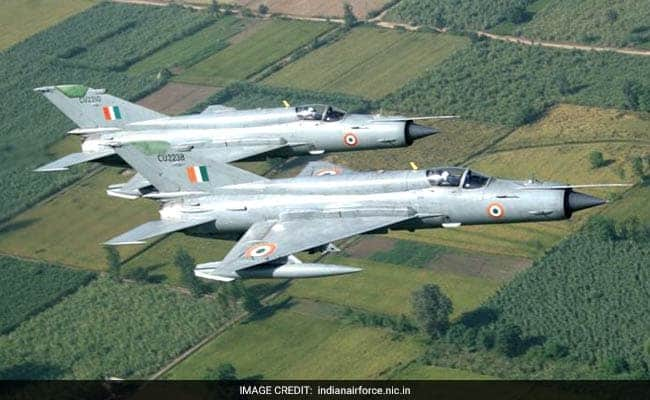Unsurprisingly, the clash between 8 Indian aircraft and 24 Pakistani aircraft having resulted in the destruction of a Pakistani F-16 and an Indian Mig21 has many political and media consequences in both countries. But if Pakistan has a relatively coherent and controlled equipment acquisition policy, ordered by an increasingly close collaboration with China, the same cannot be said of the Indian equipment policy, particularly in terms of combat aircraft.
It must be said that between the reversals of position, the extended deadlines, the extremely arbitrary decisions, and the hyper-politicization of defense contracts, Indian policy in the field appears to be the archetype of technocratic and political inefficiency. .
Today, the Indian Air Force operates 6 different types of aircraft:
- 250 Su30MKI and 69 Mig29, the majority built under license and modernized by the state company HAL
- 57 Mirage-2000-5 Mk2s built by Dassault Aviation and modernized in India
- 139 Sepecat Jaguar fighter bombers recently upgraded to extend their service life until 2030
- 85 Mig 27 and 125 Mig21, which were originally to be replaced by the MMRCA program and the locally produced Tejas.
With the exception of the Su30MKI and the most recent Mig29, all these aircraft must be withdrawn from service by 2030. The Indian Defense Minister also declared following the destruction of a MIG21 shot down by an AMRAAM Pakistani, that all MIG21s and MIG27s must be removed from service by 2024.
However, for the moment, the only aircraft actually ordered and operational to replace these withdrawals are the 36 Dassault Rafale ordered in 2016, and delivered by 2022, and the 18 SU30MKI and 21 MIG29 recently urgently ordered by the IAF.
The exact status of the Tejas, whether Mk1 or II, remains unclear. The IAF seems to be doing everything to avoid having to acquire too many of these aircraft in which it does not seem to have much confidence.
By 2030, to maintain the current 30 squadrons, the IAF would therefore have to replace nearly 350 aircraft. The task is not insurmountable, but India struggled so much to even acquire 2 squadrons of Rafales and a few Tejas over the last 10 years, that the IAF rightly has great concerns, especially since, according to the strategic objectives of the country, the IAF should have 42 and not 31 combat squadrons, i.e. almost 200 additional aircraft, in order to be able to oppose China and Pakistan simultaneously.
This is all the more true since, following this incident, it is more likely that Pakistan will accelerate the transformation of its fleet to have more modern equipment, by replacing its 180 Mirage IIIs and 5s, its 140 J-7s. which are Chinese copies of the Mig21, and its F16s which it is struggling to modernize. In fact, if for the moment the country is satisfied with the JF-17 aircraft co-produced with China, it is likely that it will quickly seek to equip itself with more modern aircraft, such as the Su-34 and 35, J10C and current J-16, and will seek to obtain subsequent generation aircraft, such as the J-20, FC-31, Su-57 or a possible Turkish T-FX.
But if the Pakistani threat remains controllable by the IAF with its Su-30MKI and its m2000, current planning will not allow the country to face China, or Pakistani modernization as mentioned.
It is therefore essential for the IAF to begin production programs, and not selection, of its new aircraft as quickly as possible, as well as the infrastructure intended to receive and maintain them, taking into account very rapid progress. of industry and the Chinese air force.
We therefore understand the pressure from the Indian military authorities to order new Rafales, in the hope of starting rapid national production of the device on national soil. In fact, the Rafale can replace the MiG27, the Jaguar and the Mirage-2000, i.e. 280 potential aircraft, to be replaced in 10 years. In addition, the IAF already has the infrastructure to maintain a fleet of 150 aircraft of this type, and the training of crews and ground teams began 3 years ago.
In addition, with a production line Rafale and a production line Rafale in service, the IAF will be able to anticipate its rise in power, whatever the future choices in terms of light fighter to replace the MIG 21, and the future 5th generation heavy fighter, which will not enter service before 2030, in the most optimistic scenario.
Regardless, today, India no longer has a large number of options and very little time if it wants to be able to assume its defense against its two neighbors by 2030. It is possible that last week's confrontation will act as an electric shock to the Indian political class, to take stock of the seriousness of its situation.

